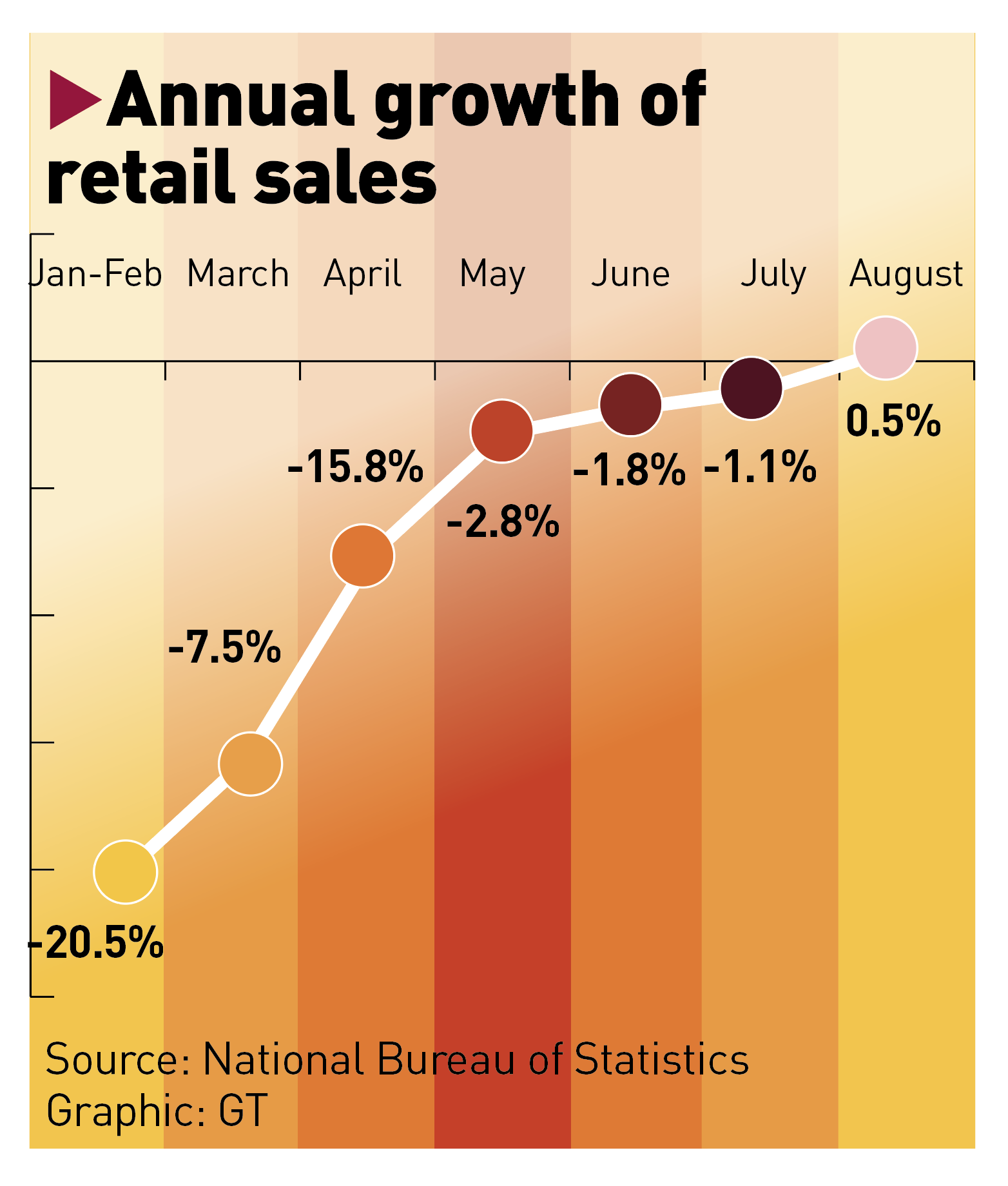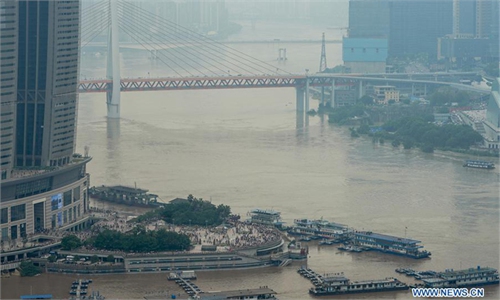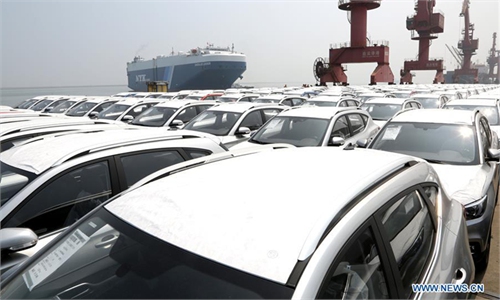SOURCE / INDUSTRIES
August economic data show improved outlook for GDP expansion
Prospects improve for GDP expansion in Q3: NBS official

Residents enjoy street food at stalls at a plaza in Beijing. Beer, skewers and various snacks allow citizens to enjoy the fun of open-air dining. Night markets have been an impetus for China's recovering economy. Photo: VCG
China's major economic indicators continued to rebound in August, despite the dual pressure of the COVID-19 pandemic and the summer flooding, the National Bureau of Statistics (NBS) said on Tuesday.
Analysts said the better-than-expected data underpins expectations for third-quarter GDP growth and an annual economic expansion of more than 2 percent.
Industrial output, investment and retail sales all continued to recover in August, NBS data showed. Notably, retail sales returned to growth for the first time this year, capping a lengthy recovery process during the past five months since the coronavirus epidemic hit the world's second-largest economy.
Retail sales rose 0.5 percent year-on-year to about 3.36 trillion yuan ($490 billion), according to NBS data. Retail sales fell 1.1 percent in July year-on-year.
Industrial value added grew 5.6 percent year-on-year in August, up from 4.8 percent in July.
Urban fixed-asset investment further improved, with a decline of 0.3 percent in the first eight months compared with a contraction of 1.6 percent for the first seven months.
If the recovery momentum continues into September, third-quarter GDP will be better than in the second quarter, NBS spokesperson Fu Linghui told a press conference on Tuesday. The economy grew 3.2 percent year-on-year from April to June.
"A revival in domestic consumption could further boost China's role in leading the world toward relegating the pandemic's ill effects to the past," Han Tan, an analyst at FXTM, said in a research note sent to the Global Times on Tuesday.
"This also shows that a firm grip on the outbreak is paramount before any economy can boost its recovery prospects," Han said.

Graphic: GT
Lifted by the data, Chinese stocks inched up on Tuesday, with the Shanghai Composite Index rising 0.51 percent and the CSI 300 up 0.8 percent.
Chinese economists said the momentum will ensure that China's GDP to grow more than 2 percent this year, and fourth-quarter growth may be as high as 6 percent.
"The August data shows that the primary and secondary sectors have by and large recovered to pre-virus levels, while the tertiary sector lags behind," Liao Qun, chief economist at China CITIC Bank who is based in Hong Kong, told the Global Times on Tuesday.
The overall resilient August data will help underpin third-quarter GDP growth to land in the range of 5.2 percent, leading to a full-year GDP rise of 2.4 percent, according to Liao.
The rebound of Industrial value added is especially strong, reaching pre-virus levels, Liao noted.
From making furniture like mattresses for export to Europe to producing components for devices like iPhones, factories in Dongguan, South China's Guangdong Province, have fully resumed production since mid-March and April, a vivid display of China's rapid economic rebound from the coronavirus epidemic.
At one production line of Stylution Int'l (China) Corp, a Taiwan-based furniture manufacturer that exports mattresses to Japan, most of its 500 workers returned in March, and some said they have been busy since then catching up on delayed orders.
"When I was stuck at home due to the epidemic, I was very anxious. Now it feels so good to get back to work," a worker surnamed Wan told the Global Times.
The factory has resumed full production as the epidemic has been fully controlled in China, and a surge in orders has been mainly driven by growing domestic demand, which is now much higher than demand overseas, said Alex Chen, Stylution's president.
However, Wan Zhe, chief economist at the China National Gold Group Corp, told the Global Times that while a strong industrial recovery underlines the resilience of China's manufacturing industry and the integrity of its industry chains, domestic consumption is trailing behind production.
The recovery of the services industry will require some time and the slow recovery of consumption weighs on the services industry, which largely consists of countless small shops that rely on discretionary purchases to sustain their business, Liao said.
"The public developed a sense of urgency about work and production resumption after the virus was put under control in China, as it matters to their job stability, incomes and careers. But for consumption, the sense of urgency disappears, and the desire to save for a rainy day is obvious, coupled by disruptions in domestic travel," Liao said.
Fu said the global pandemic, external uncertainties and imbalances in the domestic recovery are risks facing the economy for the remaining months of the year.
China's job market remained stable in August, with the surveyed urban unemployment rate edging down 0.1 percentage points from July to 5.6 percent.




